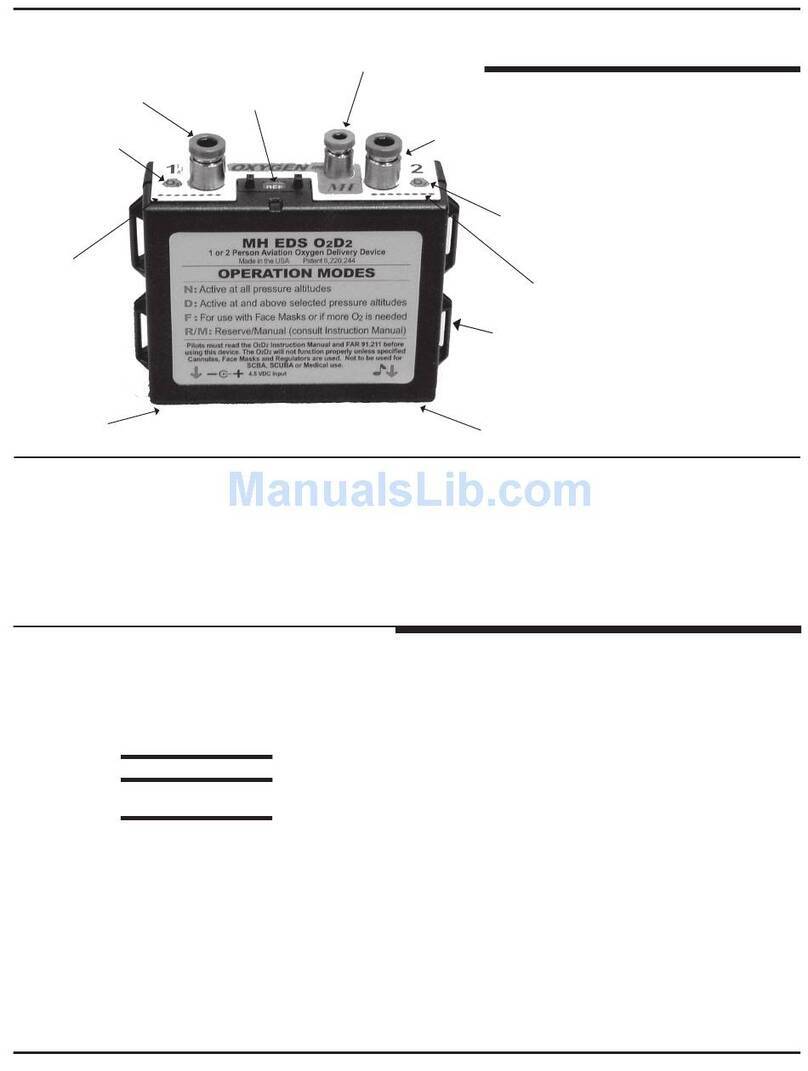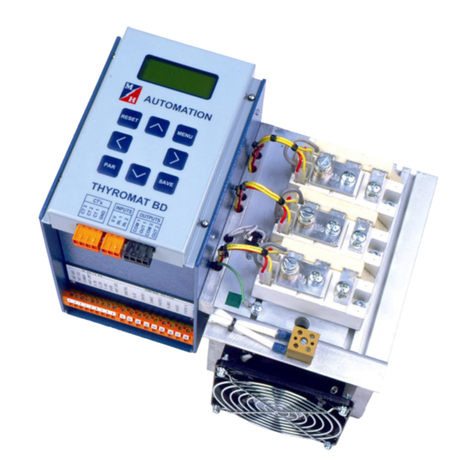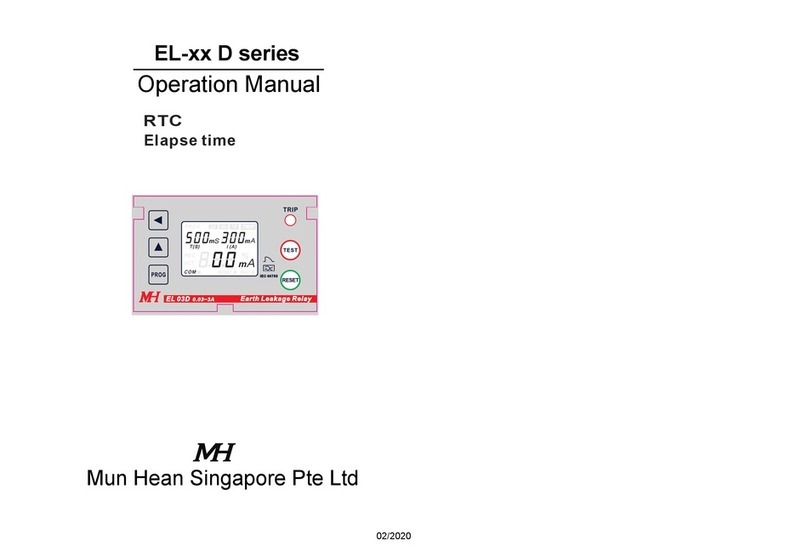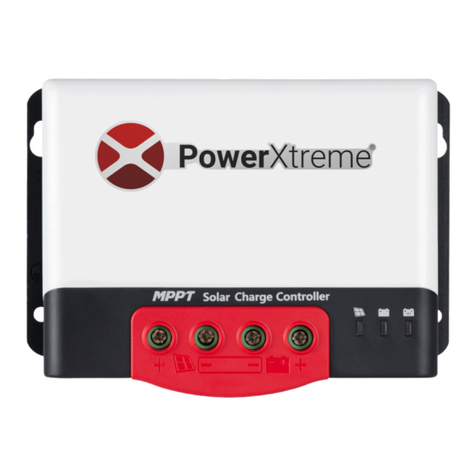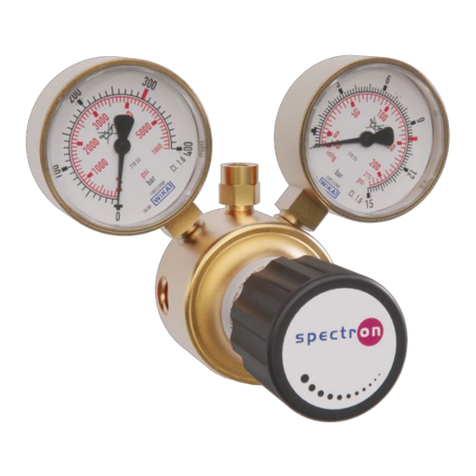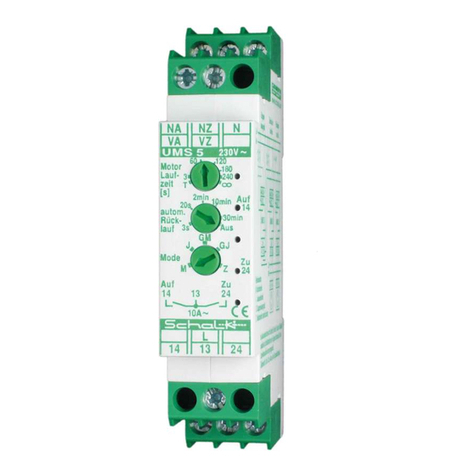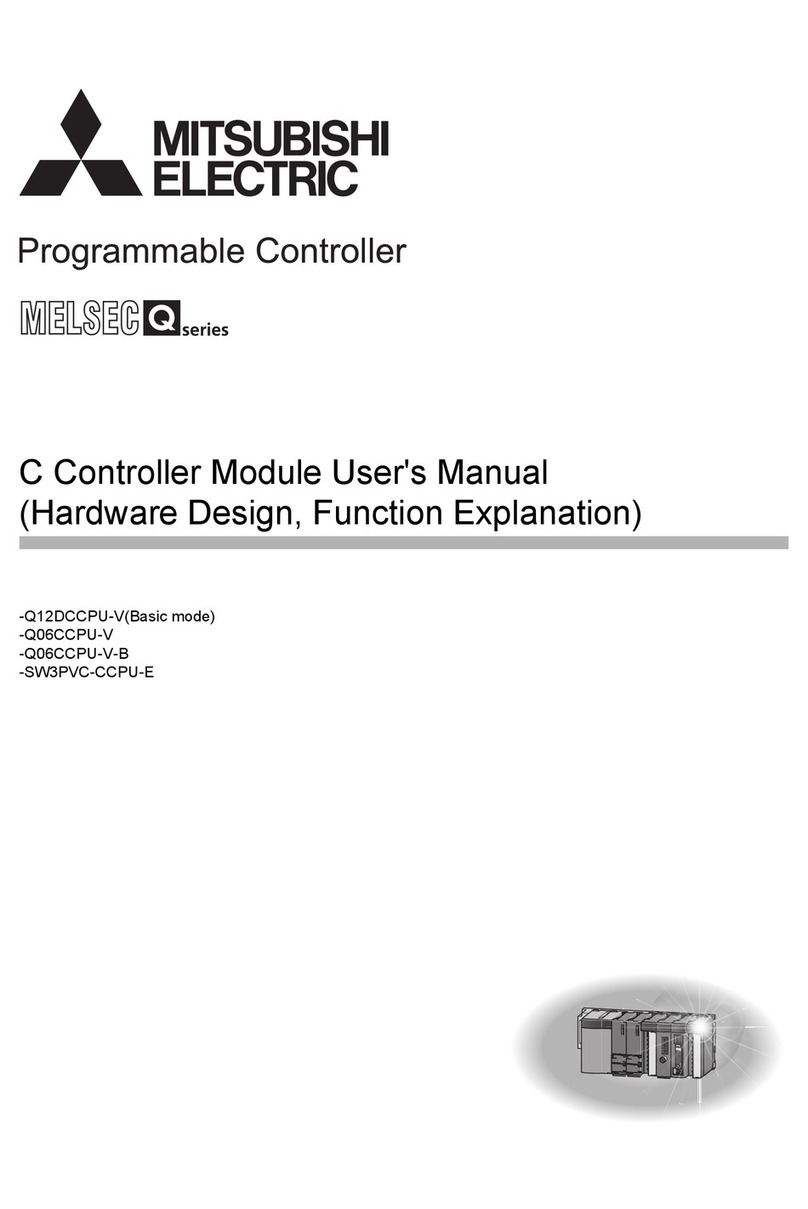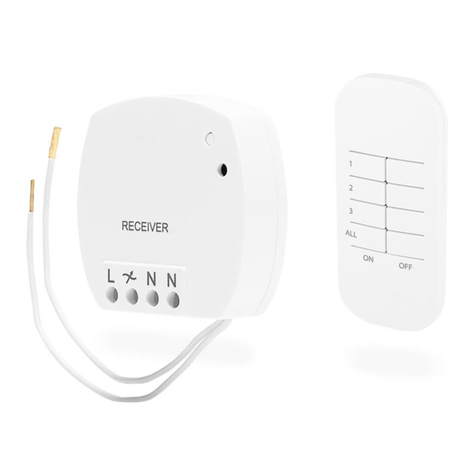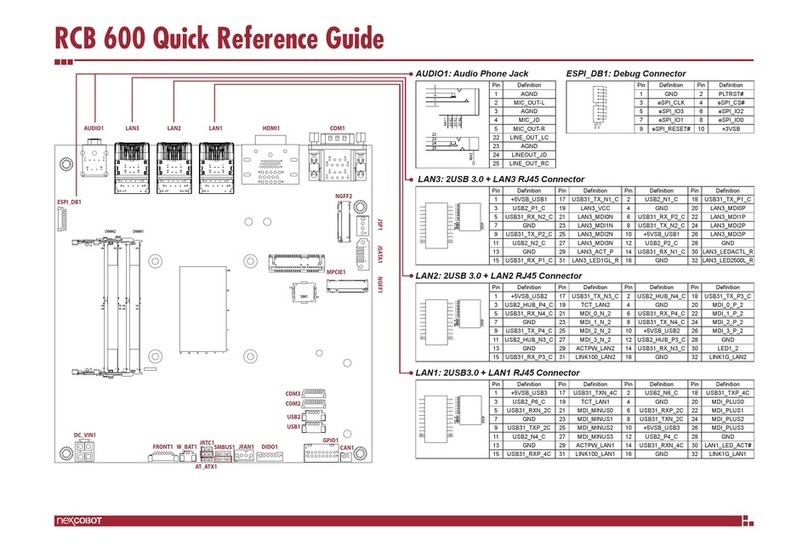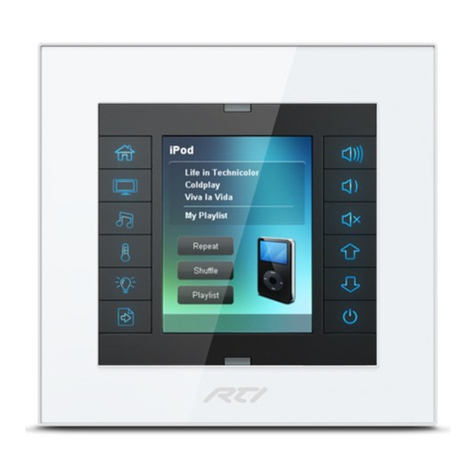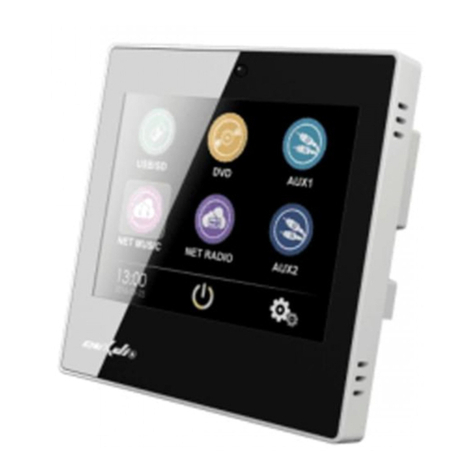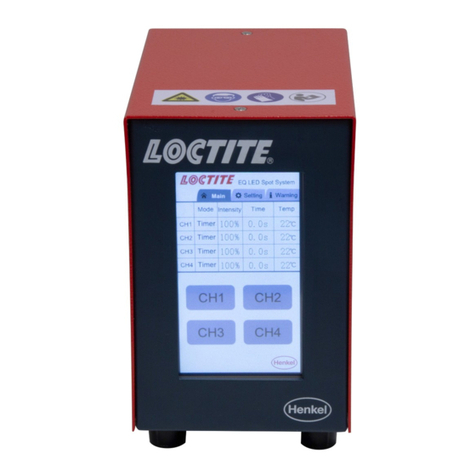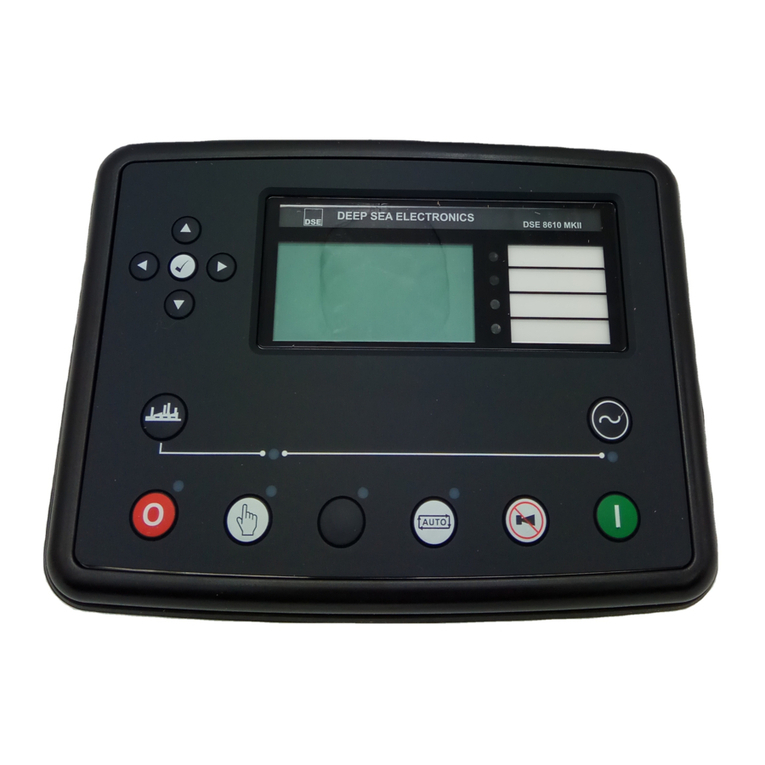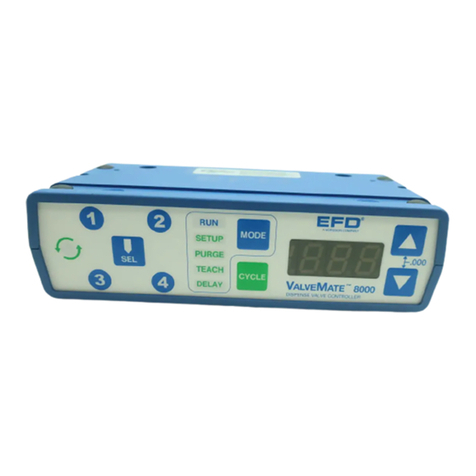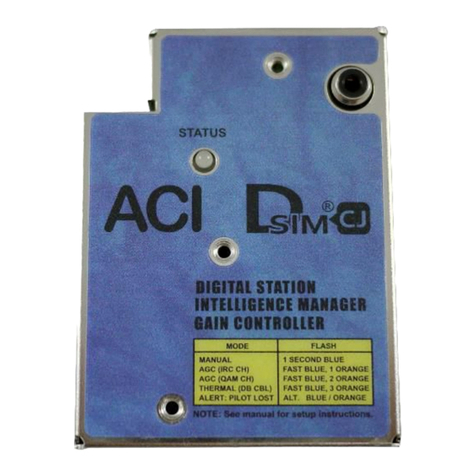MH Pulse-Demand EDS O2D2-2G User manual

1 or 2 Person
Electronic Digital Pulse-DemandTM
Aviation Oxygen Delivery System
MH EDS O2D2-2G
INSTRUCTION MANUAL
CONTENTS
Thank you for purchasing the MH EDS O2D2-
2G Pulse-DemandTM Oxygen Controller. The
EDS Pulse-DemandTM O2D2-2G is patented
innovative oxygen control technology that
allows you and your co-pilot to fly with
safety and comfort, knowing it will auto-
matically give the exact oxygen amount
required at the various altitudes.
5MD20-0002-00$a 2015/11/01
Proudly Made in the USA
Patent # 6,220,244
Other Patents Pending
800-468-8185 • 541-923-4100 • Fax: 541-923-4141 • www.MHoxygen.com • 2244 SE Airport Way, Suite 100 • Redmond OR 97756-7537
THE EDS O2D2-2GTM IS DESIGNED FOR
EASY OPERATION. CAREFULLY READ THIS
INSTRUCTION MANUAL BEFORE USE.
INTRODUCTION .......................................2
FEATURES ................................................2
BASIC SAFETY .........................................2
GETTING STARTED ..................................3
INSERTING & REMOVING
THE BATTERIES ....................................... 4
INSERTING & REMOVING TUBING .........4
STORING THE O2D2 ................................4
MOUNTING THE O2D2 ............................4
MODE CONTROL SWITCH SETTINGS &
MODES OF OPERATION ..........................5
ALARMS AND ALERTS ............................6
USING THE O2D2-2G WITH A
THIRD PARTY REGULATOR .....................7
TROUBLE-SHOOTING ..............................8
WARRANTY .............................................9
MAINTENANCE QUESTIONS .................10
AUTO COMPENSATION .........................11
WIRING THE AUDIO OUTPUT.................12
WHAT EVERY PILOT SHOULD
KNOW ABOUT OXYGEN ........................13
OTHER USEFUL MH PRODUCTS ............15
O2D2-2G SPECIFICATIONS ...................16

2
The patented MH EDS O2D2-2G (O2D2) is a one or two-user aviation oxygen delivery device. It is designed to deliver aviation
oxygen in the most efficient, comfortable and convenient way possible. With its user-selectable settings, apnea alarm and
small size, the O2D2 is the most portable and flexible electronic digital oxygen delivery system in the world.
By providing a measured pulse of oxygen at the beginning of each inhalation, the O2D2 supplies the oxygen you need to
stay alert and comfortable while flying. In contrast to constant flow systems that deliver more oxygen than the body needs,
the O2D2 provides a short, measured pulse as you inhale. This efficient patented delivery technology ensures that you get
the proper amount of oxygen (according to your breathing rate and physiological needs), at your altitude to stay safe and
comfortable. It also promises a dramatic increase in cylinder duration, which enables you to enjoy the benefits of oxygen
use below the mandated altitude. This means fewer headaches, less fatigue and better alertness when flying at night or long
distances, enabling you to fly longer between refills, save weight, as well as space with a smaller cylinder!
The programmability of the O2D2 means that, unlike constant-flow oxygen systems, you can “set it and forget it”. By auto-
matically detecting your pressure altitude, the O2D2 can be set to start providing oxygen immediately or at a specified altitude
and will automatically adjust the oxygen flow as your altitude changes. When you’re flying, you have more important
things to do than adjust your oxygen flow during altitude changes?
BASIC SAFETY
Pure oxygen is a highly oxidizing gas and can vigorously accelerate combustion. It can provide a catalyst for spontaneous combus-
tion resulting in personal injury or death if not used properly and with caution.
DO NOT use any type of oil or grease on
any of the fittings, valves or cylinders. DO NOT smoke while in use. DO NOT operate near an open flame.
Use only approved MH External Power Supply with the O2D2-2G as the voltages are not compatible.
2
PILOT #1 Blue 6 mm
outlet connects to
Pilot cannula or face mask
Audio port. On the bottom.
Sound from flow-fault and
apnea alarm conditions only.
Static ports,
DO NOT
COVER
External 4.5 VDC
Power Connector
On the bottom.
See Page 8
Red 4 mm inlet
connects to the
regulator
Power On/Off and Rotary
Mode-Selector Switch
#2 Blue 6 mm outlet
connects to User #2
cannula or face mask
Red/Green LED
indicator for
User 1 (Pilot) Red/Green
LED indicator
for User 2
Static ports,
DO NOT
COVER
Mounting
Rings
Low Battery Warning
FEATURES
INTRODUCTION
• Easy-to-use, small size and light weight.
• Incorporates a MIL spec ruggedized easy-to-grip rotary control switch providing improved reliability, increased ease of function
and visibility. This switch also has very positive position detents for excellent tactile feedback making it resistant to changes from
casual rubbing or bumping.
• Automatically adjusts oxygen ow for altitude pressure density.
• Provides reduced oxygen consumption through more efcient oxygen delivery than standard constant-ow systems.
• Rotary Mode-Selector Switch allows automatic altitude enable, Night and Day operations and high ow settings.
• Green/Yellow/Red LED’s indicate oxygen ow, alarm, and status.
• Audible and visible ow-fault alarm informs user of kinked, pinched, or disconnected oxygen lines, obstructed cannula or mask.
• Reduced dry mouth and sinus discomfort compared to constant-ow oxygen systems.

3
GETTING STARTED
The O2D2 is designed to be used with MH Cylinder Pressure Regulators. Pilots who intend to fly with the O2D2 are advised
to familiarize themselves and their passenger with the system prior to using it. Four cannulas and two face masks are included
with the O2D2 unit. The cannula may be used for flight operations up to 18,000 ft. Above 18,000 ft., a face mask should be
worn. A compatible face mask with a built-in microphone (AMSKM-2100-02) is available from MH.
Tote Bags
(Qty 2)
Face Masks (Qty 2)
EDS-O2D2-2G
AA Batteries (Qty 3)
Cannulas (Qty 4)
2 standard, 2 flared tip
3M
Dual-Lock
Instruction
Manual
Comfortable cannula
position, looped over
ears and the tab
pointed down.
1. If you have not already done so, fill your cylinder with Aviation
Oxygen. (Many FBOs offer this service.)
2. Inventory your system (see photo) and read the front label
on the unit.
3. Per the instructions provided with your cylinder and pressure
regulator, attach the pressure regulator to the cylinder and
hand tighten only. (DO NOT use a wrench or pli-
ers—the “O” ring seals the regulator to the
cylinder. Over-tightening will damage the
pressure regulator).
NOTE:
Pressure in the pressure regulator must be
released before the pressure regulator can be
removed from the cylinder.
4. Open the battery cover on the back of the O2D2 unit, install
the 3 AA batteries (supplied) and replace the battery cover.
(NOTE: Batteries fit tightly, handle with care.) See next
page for detailed instructions.
5. If you are using the O2D2 with a Mountain High four port
regulator (FPR), locate the oxygen input tube (clear tube with
a short red tube on one end) and insert the Red tube into the
Red “Oxygen In” connector on the O2D2 unit until it stops.
Then connect the other end of the tube to your regulator. If you
are using a MH single port regulator (XCR), use the tube that
came with the regulator in place of the tube that came with
your O2D2.
6. Insert the Blue end of the cannula or face mask tubing into
the BLUE #1 Pilot “Out” connector on the unit (see page 4).
Always use the #1 connector when only one (1) person
will be using the system. For a second user, insert the
BLUE end of the cannula or face mask tubing into the
BLUE #2 connector. The User #2 connection becomes active
when inhalation is detected after a short period of inhalations.
CAUTION: DO NOT pinch the Cannula or Face Mask
tubing when inserting them into the BLUE “Out”
connectors). Use only the supplied MH EDS can-
nula as other cannulas may not work properly
with the MH EDS O2D2-2G. DO NOT lengthen
or shorten the cannula tube.
7. Turn the cylinder valve on.
8. Rotate Mode-Selector Switch on the O2D2 unit once. This
will turn the unit on and set it to “N” mode. A start-up pulse of
oxygen, Red light and beeper test will verify battery power.
9. Don the cannula or face mask (make sure the face mask
seals against the skin) and take a breath. The bright green
LED under the #1 should illuminate, and a pulse of
oxygen should be delivered. Refer to the card that comes
with the cannula and face mask for donning information.
10.Test the O2D2 unit on the ground for proper operation and
adequate cylinder pressure. You are ready to fly.
3
O2D2 System
Oxygen
Input Tube

4
Remove the battery door by gently pressing down on the battery cover
flange, then tip the door out and away from the unit. The O2D2 unit uses
3 standard quality AA DURACELL ULTRA alkaline batteries, or equivalent.
Insert the batteries as shown (they will be a tight fit), then replace the door
by setting the bottom of the door in place and tipping the top in until it
snaps in place. Take extra care when removing and replacing the batteries
to not damage the batteries and/or connectors.
INSERTING OR REMOVING THE TUBING
To INSERT the tubing, push tubing in until resistance
is felt, then push in a little harder, about another 1/8 inch.
Then give it a gentle tug to make sure it has seated properly.
To REMOVE the tubing, push tubing in slightly,
then push in the connector collar while you pull gently
on the tubing to remove it.
WHEN REMOVING TUBING; DO NOT PULL
ON THE TUBING WITHOUT PUSHING IN THE
COLLAR; IT WILL DAMAGE THE CONNECTOR.
When not being used, the O2D2 unit, oxygen tubes, cannulas, etc., should be disconnected from the oxygen supply and
stored in a secure manner to ensure that dirt and debris do not become lodged in the inlet and outlet tubes. The supplied
tote bags or a zip-top plastic bag is a good storage container. If the unit is not to be used for 30 days or more,
remove the batteries. When using the unit for the first time after storage, replace with new batteries
to ensure proper operation. A set of fresh spare batteries should be part of your pre-flight inventory.
Regardless of use replace batteries annually.
DO NOT STORE THE EDS UNIT WHILE THE INLET IS UNDER PRESSURE. Remove all sources of oxygen pressure and
secure the unit to ensure it will not become damaged. If the un-pressurized supply line is left hooked to the system, make sure
that it is first purged with clean dry air or oxygen before the EDS unit is used. If the lines are disconnected, the lines
must be covered so that debris, dust or dirt can’t get in.
MOUNTING THE MH EDS O2D2-2G
You may mount the O2D2 unit to a suitable place using the supplied piece
of 3M DUAL LOCK tape. First, cut the piece of DUAL LOCK tape in half,
lengthwise, creating two long rectangles. Peel the protective backing off
one of the rectangles to expose the adhesive and apply it to the back of
the unit above the thumb indent for the battery door. DO NOT COVER ANY
PART OF THE BATTERY DOOR. When a suitable place to mount the unit
has been found, peel off the protective adhesive backing and press the
adhesive side to the chosen mounting area.
INSERTING OR REMOVING THE BATTERIES
STORING THE MH EDS O2D2-2G
1. Push in the connecting collar
2. Pull the tube
straight back while
pushing in the
connecting collar.
D-rings Battery
Door
3M Tape
Before
Dual-Lock
Apply
Dual-Lock
Battery
Door
D-rings
4
A. Push in the tube
REMOVING
INSERTING
You may also mount the O2D2 by feeding 3/4”- wide straps
(not included) through the D-rings molded into the unit.
+
+
+
--
-
NOTE:
Batteries should be replaced annually or when voltage is low.
LITHIUM BATTERIES ARE NOT RECOMMENDED as the Low
Battery Voltage Indicator WILL NOT function correctly

5
The O2D2 unit is controlled by the Rotary Mode-Selector Switch
ROTARY MODE-SELECTOR SWITCH SETTINGS AND MODES OF OPERATION
N MODE: “Night” or “Now”
At this setting the O2D2 will immediately start the standard oxygen flow providing
pulses of oxygen appropriate for an average healthy person using a cannula.
Flow start: All altitudes Use with: Cannula
Flow amount: Standard Pulse Altitude Compensating?: Yes
The D5 setting will cause the O2D2 unit to delay oxygen flow until it senses a pressure
altitude of 5,000 ft. and above. The D10 setting delays oxygen flow until 10,000 ft. and
above. NOTE: When the barometric pressure is low, it will start operation at a slightly
lower flight altitude than when the barometric pressure is high.
Flow start: D5--5,000 ft., D10--10,000 ft. Use with: Cannula
Flow amount: Standard Pulse Altitude Compensating?: Yes
D MODES: “Day” or “Delayed”
Mode-Selector
Switch Settings
F MODES: “Fat” or “Face Mask”
The O2D2 has three main modes of user controlled operation:
1. Semi-Automatic (N Mode)
2. Fully-Automatic (D5, D10)
3. Semi-Automatic (F Modes)
NOTE: The N and D modes are designed to provide the amount of oxygen needed by an
average size and healthy person using a cannula at the given altitudes; your needs may
be different. To determine whether you are receiving enough oxygen in a particular mode
you will need to use a pulse oximeter (available from Mountain High) to determine your
blood oxygen saturation (goal is 90-100%) at any given altitude. The selected O2D2 mode
applies to both users and should be set to accommodate the user with the highest oxygen
need. In all modes, the O2D2 provides a pulse of oxygen which increases with altitude,
i.e., it is altitude compensating.
Mode-Selector as seen
in the ”OFF” setting
5
F settings 1 to 2 are for small Alps face masks.
Settings 2 to 3 are for medium sized Alps face masks.
3 to 4 are for large Alps face masks.
F1=
F2=
F3=
F4=
Small Mask
Medium Mask
Large Mask
NOTE: The F settings are used with the Face Mask or when
requiring an increased oxygen flow with the cannula.
The F-Mode settings augment the amount of oxygen needed to compensate for the ad-
ditional dead-space plenum associated with face masks. They also can be used with the
MH cannula in situations where more oxygen may be required over the normal ‘N’ and ‘D’
settings. Since F-Mode settings are calibrated for use with the MH Alps face masks, only
use the approved MH EDS or ALPS face mask.
Flow start: All altitudes Use with: Cannula or face mask
Flow amount: Enriched: Altitude Compensating: Yes

6
6
The O2D2-2G is equipped with AUDIO-VISUAL ALARMS and ALERTS designed to bring to the user’s
attention to potential malfunctions of the unit. Read the following for specifics.
ALARMS AND ALERTS
POWER UP
POWER-UP: Red Light flashing on and off with audio chime for ~ two (2) seconds with each initial power-up with pulse
of O2for about 1/2 second. At Power UP, the Battery monitoring circuit requires several seconds to properly assess the condi-
tion of the Batteries. Therefore observe the unit for several seconds after Power Up to watch for signs of a
Low or Bad Battery condition.
O2DELIVERY or NON-DELIVERY: Normally one flash of the LED Green Light (~1/4 second minimum) will flash for each
pulse of oxygen with a valid inhalation event with properly connected oxygen lines.
NOTE: The O2D2 FLOW-FAULT (see FLOW-FAULT below) indicator will not function as an out-of-oxygen warning if the pressure
in the oxygen cylinder is 500 psi or less. There may be pressure in the oxygen line but not enough to activate the Pulse-Demand
unit, consequently...no FLOW-FAULT warning. Prior to flying, using the cylinder chart, the pilot should estimate his flight altitude
and time to determine the amount of oxygen that he or she will need. It is better to have more than your estimated need. If a
pilot consistently flies above 18,000 feet, the aircraft should have a supplementary gauge, visible during flight by the pilot, to
determine the cylinder oxygen pressure. You should also carry an EOS (Emergency Oxygen System) such as the MH Co-Pilot as
a back-up safety feature in case the other system stops working. It is the absolute responsibility of the pilot to determine that
there is an adequate amount of oxygen pressure in the oxygen cylinder prior to his flight, as well as an emergency back-up in
case of a system failure. THE OXYGEN SYSTEM MUST BE CHECKED AND TESTED ON THE GROUND BEFORE THE
FLIGHT.
O2DELIVERY or NON-DELIVERY
FLOW-FAULT EVENT: The LED Red Light will flash on and off along with a Hi-Lo audio chime for ~ 2 seconds with every
event. NOTE: The FLOW-FAULT is not intended as a low or out-of-oxygen warning. It is only intended
to warn the pilot that there is no oxygen flowing to the EDS O2D2 unit. This typically means that the cylinder valve was not
opened, the supply line has been pinched closed, is plugged up or has come off, or the valve in the O2D2 has failed to open.
FLOW FAULT EVENT
APNEA EVENT: Flash Amber Light four (4) discrete times with audio beeps once every four (4) seconds until unit detects
a valid inhalation event. Time before Apnea event is ~30 ~35 seconds. This typically occurs for the following reasons: (1) The
user has quit breathing for 30 - 45 seconds or the cannula/face mask is improperly worn.
(2) The outlet tube from the O2D2 to the mask or cannula has become disconnected. (3) The outlet tubing has become
pinched closed or is plugged off. The apnea alarm can be used as a “put-your-oxygen-on” alarm once you get to the
preset D mode altitude (D5 or D10). In this case, the alarm will not sound if you already have the cannula or face
mask on properly.
APNEA EVENT
LOW BATTERY-1: Depending on battery condition, one short flash of the Red Battery Light once every
two (2) seconds, no sound. The unit will continue to operate properly for about four hours @ 77°F (25°C)
after the indicator starts to flash. The O2D2 will operate for ~ 50 hours with a fresh set of DURACELL ULTRA alkaline
batteries under normal operation.
LOW BATTERY-1 (First Warning)
LOW BATTERY-2: One short flash of the Red Battery Light once every second, with chirp sound. When this
alarm occurs, the unit may operate for about 60 minutes, then the oxygen flow will stop and may go into the Bad Battery
Mode. BATTERIES SHOULD BE REPLACED IMMEDIATELY.
LOW BATTERY-2 (Second Warning)
BAD BATTERY: The batteries are too low to operate the unit, and it will no longer dispense oxygen. The Battery Light
may or may-not be red or green, but User 1(Pilot) and User 2 LED’s will alternately flash Red about two times a second.
BATTERIES SHOULD BE REPLACED IMMEDIATELY!
BAD BATTERY

7
7
USING THE MH EDS O2D2-2G WITH A THIRD-PARTY REGULATOR
If the MH EDS O2D2-2G will not be used with a MH Regulator, the alternate regulator must be
able to deliver a pressure of between 15 and 20 psi (static). If the listed pressure specifications
[15 and 20 psi (static)] are not met, the MH EDS O2D2-2G may not operate correctly. Lower pres-
sures will result in an inadequate volume of oxygen. Higher pressures will result in a too high volume of oxygen.
Excessively high pressures will cause the valve to open spontaneously and leak oxygen.
To use the MH EDS O2D2-2G with a third-party regulator or built-in oxygen system with a pressure higher
than 20 psi, it is mandatory that you use the MH EDS IN-LINE REGULATOR (EDS ILR) to ensure correct flow
pressure. The EDS-ILR goes between the third-party regulator or built-in system and the O2D2 to reduce the flow
pressure to the appropriate level.
MH EDS In-Line Pressure Regulator
The light-weight MH EDS In-Line Pressure Regulator enables you to connect your MH
EDS MH EDS O2D2-2G directly to an aircraft with built-in oxygen systems. The MH
EDS Pulse-DemandTM units require an oxygen inlet pressure between 15 and 20 psig.
CFI In-Line Pressure Regulator Kit (MH Part Number: 00REG-1048-05)

8
•The O2D2-2G unit emits no sound or start-up oxygen pulse when turned on:
1. Check batteries to make certain they are fresh.
• Start-up sound is heard, but no start-up oxygen pulse delivered:
1. Check oxygen cylinder valve is open.
2. Check oxygen supply tube for proper connection.
3. Check oxygen supply tube for obstructions.
4. Check O2D2-2G outlet tubing for obstructions.
•The O2D2-2G does not trigger:
1. Try using the Flared-Tip cannula included with the kit (MH part number 00EDS-1084-01)
• When using the face mask, no oxygen pulse on inhalation:
1. Make sure the face mask is sealed against the skin.
2. Check for obstructions on the O2D2-2G outlet tubing.
3. Use only EDS approved face masks provided by Mountain High Equipment & Supply.
NOTE: EDS face masks DO NOT have a dilution bag attached.
TROUBLESHOOTING
WARNING
DO NOT
increase or decrease
length of cannula
or face mask supply
tubing.
8
NOTE: USE ONLY this approved MH External Power Supply with the MH EDS O2D2-2G
as other power supplies may not be compatible
External 4.5 VDC Power Connector
The MyGoFlight Adapter DualMicro is the top of the line DC charger for 12-28 volt systems and the USB con-
nector cord (39-inch -[1Meter] cord) fits any standard USB with a 5V @ 2.4A output. The USB ports on this device
feature Rapid Charge technology, which allows you to fully charge 2 full-sized tablet devices in no time at
all.The DualMicro supports 24 volt systems that typically output a charge of 28 volts, and are found in many
aircraft. Just keep the DualMicro in your flight bag and you will always have all of the power that you need
when you need it. Works with all tablets, ADS-B receivers, GPS units, iPhones, smartphones and any other
USB powered device.Tested not to interfere with on-board radios and navigation equipment.Dual 2.4A ports
enable charging of combination of tablets,ADS-B/GPS units, phones, or other devices. Handles 12-28 volt in-
put as common in many aircraft, trucks and RVs. Dual 2.4A ports allow for rapid charging of multiple devices.
MYGOFLIGHT 12/28V POWER ADAPTER KIT (MH Part Number: 39330-1250-00)

9
LIMITED WARRANTY
This device is classified as, and is only suitable for use as, a supplementary breathing apparatus (SBA) for aviation
use. It is intended to help supply the needed amount of oxygen for persons during flight altitudes where supple-
mental oxygen is needed. This device is not suitable for any type of life support operations. This device is not
suitable for SCBA (Self Contained Breathing Apparatus), SCUBA (Self Contained Underwater Breathing Apparatus)
or any medical operations.
Before it is put to use, it is the responsibility of any user who will use this device to become familiar with the
operation and safety aspects of this device. Using the system improperly could cause failure and lead to possible
property damage and/or personal injury.
NOTICE OF NON-LIABILITY
Mountain High Equipment & Supply Company warrants your MH EDS O2D2-2G unit against defects in materials and
workmanship for two (2) years from date of purchase invoice. The warranty is non-transferable. Should any part of the
MH EDS O2D2-2G become defective within the warranty period return the EDS Unit with a description of what/why it
is not functioning and we will repair or replace it, at our discretion, free of charge (you pay only shipping to MH).
Return the Unit to:
Mountain High Equipment and Supply Company
Service Department
2244 SE Airport Way, Suite 100
Redmond OR 97756-7537
This warranty is non-transferable and only valid if Mountain High Equipment & Supply Company determines that
the system and its components have not been damaged due to improper use, been submerged in fluids, dismantled
or abused. Mountain High Equipment & Supply Company reserves the right to determine if repairs are to be done
under warranty or at a nominal charge. To activate warranty coverage, you must complete and return your
enclosed owner’s EDS Registration Card.
9

10
MAINTENANCE QUESTIONS
Maintenance Questions for MH EDS 02D2-2G PULSE DEMAND™Portable Systems:
Q: I have one of your portable MH-EDS PULSE DEMAND™ units. It seems to be operating just fine, should I send it in for any
type of routine service or testing?
Yes. Even though your pulse-demand unit will generally let you know if there is a problem and has been designed to be
relatively maintenance free except for batteries, it should be sent in on a regular basis for performance inspection and
service. This includes the in-line or screw-on regulator you use with the EDS. Think of it like performing an annual
inspection on your aircraft.
Q: Why has this not been mentioned before and how often does MH recommend this be done?
This service program has been derived from usage and servicing data acquired during the last 20+ years the technology
has been in production and fielded. From this, Mountain High has decided on a routine service program that should be
accomplished once every two years, (biennially). This must include the regulator you are currently using with the EDS
unit(s).
Q: What is done to my EDS unit and regulator when I send them in for service?
From time to time we make engineering improvements during our production. These improvements may include
changes to hardware or firmware or both. This is our way of passing on our latest improvements to you. Also routine
service parts such as seals, seats, O-rings and filters are inspected and replaced. Your EDS unit(s) and regulator(s) are
then thoroughly inspected and tested on our AIP test set to ensure they are operating to specified standards. This will
help to ensure your system is operating properly and upgraded to the latest specifications. Any other parts replaced due
to damage or field use would be subject to an additional charge.
Q: How long should I expect this service to take?
Once we receive your unit, in-house turn-around time is generally five to ten working days.
Q: I have sent my EDS unit back once before for a problem of leaking or not responding at certain altitudes, but it came back
with the same problem. Why?
Some problems perceived to be with the EDS units have, in fact, turned out to be with the regulator. This has mostly
been the case if you are not using the regulator designed for the EDS or are connecting directly to a built-in system
installed in your aircraft. This is why you must include the primary reducing regulator you are using (ours or not) or
tell us that you are connecting the EDS unit(s) directly to your aircraft’s built-in system without our inline regulator.
Many other regulators do not regulate the pressure adequately for the EDS units to operate and deliver the proper
amount of oxygen. Damage can be done to the breathing sensor in the EDS units if the operating pres-
sure is too high. In addition, we have seen many situations where customers connect the EDS unit to the connectors
and tubing that came with their aircraft, then plug them into the high-pressure outlets in the aircraft. This has caused a
lot of confusing problems because these connectors generally have flow restriction orifices. In many cases this has
allowed the EDS unit to check out okay at ground level when the pulse response is low, but then complain with flow
fault alarms at higher cruising altitudes. Additionally, this problem can be difficult to reproduce because the EDS unit
operates with pressure altitude and not barometrical corrected altitude.
10

11
11
AUTO COMPENSATION INFORMATION
EDS O2D2-2G Auto-compensation
Altitude compensated breathing sensor
Because absolute atmospheric pressure lessens as a function of altitude, breathing efforts assert less pressure upon breath-
ing sensors to the point at which they may not properly detect breathing while at higher altitudes. Additionally, as the partial
pressure of CO2 drops below a normalized point with altitude, one’s breathing efforts also diminish. With these two physical
and physiological effects while ascending to higher altitudes, it becomes necessary for the EDS to compensate for this.
The EDS has an active algorithm that constantly and automatically makes breathing sensor sensitivity adjustments based on
detected pressure altitude changes and breathing efforts. This helps ensure that all breaths are detected and responded to
with the proper amount of oxygen without mis-triggering from artifacts. There are no user settings for this function as it is
entirely automatic.
Automatic respire-metric compensation
An adult person of average size (with no compromising pulmonary conditions or illnesses) will have an average respiration
rate between 12 and 18 breaths per minute. Persons between 60 and 75 years of age will generally have a rate between 12
and 28 breaths per minute. The respiration effort at rest generally becomes less as the rate increases. Shallow breathing with
elevated respiration rates are also typical with exposure to lower partial pressures from altitudes and/or anxiety.
With exposure to lower partial pressures from excursions to higher altitudes, breathing efforts will generally lessen as the
partial pressure of CO2 drops along with other atmospheric gases. Respiration is primarily controlled by chemoreceptors that
detect dissolved CO2 in the blood. Higher CO2 levels, from physical work, trigger higher respirations until CO2 is re-normal-
ized. Oxygen levels increase from this as well. Therefore, as the amount of dissolved CO2 reduces in the blood so does the
need to respirate. Unfortunately, this also exacerbates hypoxia as less oxygen is inhaled and admitted into the blood as the
body has no reason to respirate to expel any more CO2.
The EDS has a poly-metric method of dynamically adjusting the amount of oxygen delivered on a breath-by-breath basis as a
function of detected pressure altitude, respiration rate and (in some cases) breathing efforts. Without actually complement-
ing respiration with a small amount of CO2 at higher altitudes to encourage respiration, the EDS will dynamically augment
the amount of oxygen delivered to help ensure that each individual person’s breathing profile is complemented with a
‘best-effort’ schedule of needed oxygen while at higher altitudes. If the EDS is unable to establish meaningful respiremetrics
caused by pneumatic artifacts or mis-fitting cannulas and/or face masks for the current user, it will default to known param-
eters to cover a known mean pulmonary profile.
Compensating for various plenum volumes associated with face masks
A face mask, unavoidably, has a volume of space (plenum) that does not directly contribute to the admission of oxygen. This
plenum can compromise the initial admission of oxygen by allowing the user to re-breathe CO2 rather than oxygen at the
most important point of the inhalation phase, displacing some of the pulse of oxygen. While a small amount of re-inhaled
CO2 can actually be beneficial at higher altitudes as it encourages respiration, missing the full complement of the prescribed
amount of oxygen at altitude is not.
The EDS has four manually operated F-Mode settings, 1 through 4, that provide an additional bolus of oxygen with each
breath to help mitigate this. Each setting provides a progressively larger bolus. This is intended to be used to compensate for
the plenum volume associated with the use of face masks settings 1-2 for small sized masks, 2-3 for medium sized masks
and 3-4 for use with large sized masks. These F-Mode settings can also be used if the user determines that they may need
more oxygen than is automatically prescribed.

12
12
WIRING THE AUDIO OUTPUT
On the 3.5mm Plug, (not provided) the Tip is the first
Audio Output, the Ring is the second Audio Output,
and the Barrel is the Shield or Ground. There is no
need to designate Left or Right as both Audio Out-
puts provide the same signal.
OPTIONAL 3.5MM STEREO AUDIO PLUG AND CABLE
To EDS
Audio Jack To Aircraft
TYPICAL COMMUNICATIONS WIRING
The standard wiring option has one Audio Out-
put wired to the Left Input and the other Audio
Output wired to the Right Input.
EDS Audio Cable Aircraft Input
TWO O2D2-2G UNITS DRIVING ONE INPUT
The outputs from one O2D2-2G
May NOT be tied to the outputs
from another O2D2-2G. In the case
of installing two O2D2-2G units in
an aircraft, each should be given its
own input to the communications
system. If this is not an option,
then wire the Audio Output of one
O2D2-2G to the Left Input and the Audio
Output of the other O2D2-2G to the Right
Input.
EDS Audio Cables Aircraft Input
DRIVING A LOW IMPEDANCE INPUT
The Audio Outputs of an O2D2-2G are designed to
drive standard stereo inputs with impedance from
1000Ωto 10,0000Ω. To accommodate a lower
impedance input, parallel both Audio Outputs
EDS Audio Cable Aircraft Input

13
13
WHAT EVERY PILOT SHOULD KNOW ABOUT OXYGEN
What Is Air?
The air surrounding us is a mixture of gases consisting of 78% nitrogen and 21% oxygen. The remaining 1% is made up of argon, carbon
dioxide, and traces of rare gases.
What Is Oxygen?
Under normal conditions, pure oxygen is a colorless, tasteless, odorless, non-combustible gas. It is the most important single element in our
universe.
Why Is Oxygen So Important?
Although it will not burn alone, oxygen supports combustion; in fact, without oxygen there can be no fire. Oxygen, therefore, is not only
necessary for the burning of combustible materials, but it is also absolutely essential to support the process of “vital combustion” which
maintains human life. Although a person can live for weeks without food or for days without water, he or she dies in minutes if deprived of
oxygen. The human body is essentially a converter which consumes fuel and produces heat and energy. It is like a furnace which utilizes the
oxygen in the air to burn coal, thus producing heat and power. The human body must have oxygen to convert fuel (the carbohydrates, fats,
and proteins in our diet) into heat, energy, and life. The conversion of body fuels into life is similar to the process of combustion; fuel and
oxygen are consumed, while heat and energy are generated. This process is known as “metabolism.”
Where And How Do We Normally Obtain Our Oxygen?
At each breath we fill our lungs with air containing 21% oxygen. Millions of tiny air sacs (known as “alveoli”) in our lungs inflate like tiny
balloons. In the minutely thin walls enclosing each sac are microscopic capillaries, through which blood is constantly transporting oxygen
from the lungs to every cell in the body. Because the body has no way to store oxygen, it leads a breath-to-breath existence.
How Much Oxygen Does The Human Body Need?
The rate of metabolism, which determines the need for and consumption of oxygen, depends on the degree of physical activity or mental
stress of the individual. A person walking at a brisk pace will consume about four times as much oxygen as he or she would when sitting
quietly. Under severe exertion or stress, he or she could be consuming eight times as much oxygen as when resting.
What Happens If The Body Does Not Receive Enough Oxygen?
When the body is deprived of an adequate oxygen supply, even for a short period, various organs and processes in the body begin to suffer
impairment from oxygen deficiency. This condition is known as “hypoxia.” Hypoxia affects every cell in the body, but especially the brain and
the body’s nervous system. This makes hypoxia extremely insidious, difficult to recognize, and a serious hazard especially for flight personnel.
What Are The Effects Of Hypoxia?
Hypoxia causes impairment of vision (especially at night), lassitude, drowsiness, fatigue, headache, euphoria (a false sense of exhilaration),
and temporary psychological disturbance. These effects do not necessarily occur in the same sequence nor to the same extent in all individu-
als, but are typical in average persons who are affeded by hypoxia.
When And Why Must We Use Extra Oxygen?
Supplementary oxygen must be used to enrich the air we breathe to compensate for either a deficiency on the part of the individual or a de-
ficiency in the atmosphere in which we are breathing. A person may have a respiratory or circulatory impairment which reduces the ability of
the body to utilize the 21% oxygen in the air. For such a person, supplementary oxygen must be administered by an oxygen tent or by oxygen
mask to enrich the inhaled air. The total volume of oxygen in each inhalation is then so much greater than normal that it compensates for the
individual’s own physical inability to utilize normal atmospheric oxygen. When we ascend in altitude, a different condition is encountered: a
condition in which the individual may be perfectly normal, but in which there is an oxygen deficiency in the atmosphere and supplementary
oxygen must therefore be used.
Does The Percentage Of Oxygen In The Air Change With Altitude?
No, the ratio of oxygen to nitrogen in the composition of air does not change. The 21% of oxygen in the air remains relatively constant at
altitudes up to one hundred thousand feet.
Why Must We Use Extra Oxygen When We Ascend In Altitude?
The blanket of air which surrounds our planet is several hundred miles thick, compressible, and has weight. The air closest to the earth is
supporting the weight of the air above it and, therefore, is more dense; its molecules are packed closer together. As we ascend in altitude, the
air is less dense. For example, at 10,000 feet, the atmospheric pressure is only two-thirds of that at ground level. Consequently, the air is less
dense, and each lungful of air contains only two thirds as many molecules of oxygen as it did at ground level.At 18,000 feet the atmospheric
pressure is only one-half of that at ground level. Although the percentage of oxygen is still the same as at ground level, the number of mol-
ecules of oxygen in each lungful is reduced by one-half. As we ascend, there is a progressive reduction in the amount of oxygen taken into
the lungs with each breath, and a corresponding decrease in the amount of oxygen available for the bloodstream to pick up and transport
to every cell in the body. To compensate for this progressive oxygen deficiency, we must add pure oxygen to the air we breathe in order to
maintain enough oxygen molecules to supply the metabolic needs of the body.
At What Altitudes Should Oxygen Be Used?
In general, it can be assumed that the normal, healthy individual is unlikely to need supplementary oxygen at altitudes below 8,000 feet. One
exception is night flying. Because the retina of the eye is affected by even extremely mild hypoxia, deterioration of night vision becomes sig-
nificant above 5,000 feet. Between 8,000 and 12,000 feet, hypoxia may cause the first signs of fatigue, drowsiness, sluggishness, headache,
and slower reaction time. At 15,000 feet, the hypoxic effect becomes increasingly apparent in terms of impaired efficiency, increased
drowsiness, errors in judgment, and difficulty with simple tasks requiring mental alertness or muscular coordination. These symptoms become
more intensified with progressively higher ascent or with prolonged exposure. At 20,000 feet, a pilot may scarcely be able to see, much less
read, the instruments. His or her hearing, perception, judgment, comprehension, and general mental and physical faculties are practically use
(continued on next page)

14
14
less. The pilot may be on the verge of complete collapse.Therefore, the availability and use of supplemental oxygen is recommended on
night flights where altitudes above 5,000 feet are contemplated, and for altitudes above 8,000 feet on daytime flights.
How Can You Tell When You Need Oxygen?
You can’t; therefore, oxygen should be used before it is needed. The most dangerous aspect of hypoxia is the insidious, “sneaky” nature of
its onset. Because the effects of hypoxia are primarily on the brain and nervous system, there is a gradual loss of mental faculties, impair-
ment of judgment, coordination, and skill; but these changes are so slow that they are completely unnoticed by the individual who is being
affected. Actually, a person suffering from mild or moderate hypoxia is apt to feel a sense of exhilaration or security, and may be quite proud
of his or her proficiency and performance although he or she may be on the verge of complete incompetence. Because hypoxia acts upon
the brain and nervous system, its effects are very much like those of alcohol or of other drugs which produce a false sense of well-being.
There is a complete loss of ability for self-criticism or self-analysis. Some people believe that a pilot can detect his or her need for oxygen by
noting an increase in breathing rate, an accelerated heartbeat, and a slight bluish discoloration (cyanosis) of the fingernails. However, by the
time these symptoms develop, the individual is more likely to be mentally incapable of recognizing these signs. The person may even decide
that he or she has always wanted blue fingernails! Even while “spiraling” out of control, the individual may be convinced (if conscious at
all) that he or she is doing this deliberately and enjoying it immensely
Are All Individuals Equally Affected By Hypoxia?
No, they are not. Just as there is a variation among individuals in their ability to tolerate heat, cold, or alcohol, some people can tolerate
without apparent effect a degree of hypoxia which would have noticeable effects on others who are more susceptible to the lack of oxygen.
There is no way to measure and predict hypoxia tolerance because it can be affected by physical condition, fatigue, emotion, tobacco, alco-
hol, drugs, diet and other factors. The individual who has flown at 14,000, 16,000, or 18,000 feet without oxygen and survived has no idea
how close he or she may have been to disaster. The person may believe that all this talk about oxygen need, if true at all, does not apply to
him or her. Such a belief may some day be fatal.
Is It True That Oxygen Is Toxic Or Harmful?
Oxygen therapy is often used for prolonged periods in hospitals and homes not with harmful, but definitely beneficial effects. It is most
generally agreed that a 60% oxygen concentration on the ground, which is equivalent to a 100% oxygen concentration at approximately
12,000 feet, will not cause any harmful effects.
Why Not Use Oxygen Intermittently For Short Periods?
If one is at an altitude where there is an oxygen deficiency, intermittent use of oxygen would only temporarily alleviate the hypoxic effects
during the period in which oxygen is being used. Because of the insidious nature of hypoxia, a person already mildly hypoxic is very unlikely
to even think of using oxygen equipment, either intermittently or otherwise. It is true that occasional use of oxygen for five or ten minutes
(even at altitudes below 8,000 feet) can act as a “refresher” to relieve the effects of mild hypoxia, cigarette smoke, apprehension, or other
factors. Also, the use of oxygen for five or ten minutes before the termination of a flight (even though the entire flight may have been flown
at less than 8,000 feet) can be an excellent tonic to put the pilot in his or her best mental and physical condition for the approach proce-
dures and landing maneuvers.
How Will Oxygen Equipment Improve The Utility Of The Airplane?
With oxygen equipment aboard, the pilot can choose the higher altitudes which give the smoothest flight, the most favorable winds, the
best performance from the Omni and other radio navigation equipment, the highest speed, the longest range, and the best engine perfor-
mance. The pilot can have these advantages safely with oxygen because his or her own performance will not be affected by hypoxia; he or
she will be just as efficient and capable as at lower altitudes or even on the ground. With oxygen equipment in use, pilot and passengers
will arrive at their destination fresh and fit, without the headache, lassitude, and fatigue which often result from prolonged exposure to even
mild hypoxia.
What Types Of Oxygen Equipment Are Available For Private And Executive Aircraft?
There are a variety of types, including portable MH EDS “Pulse-Demand” units which can be carried along when flight at hypoxic altitudes is
anticipated. If flights at such altitudes are frequent, then a “built-in” oxygen system offers some advantages, especially in the larger aircraft.
For either portable or built-in systems there is a choice between “Pulse-Demand” type and “Continuous Flow” type equipment. “Pulse-De-
mand” type equipment automatically delivers oxygen to the user during each inhalation in response to his or her own breathing pattern and
altitude. The continuous flow type system delivers oxygen at a fixed rate to an accumulator bag which is attached to the mask, and from
which the user inhales each breath. The Pulse-Demand is the most efficient.
How Should An Oxygen System Or Equipment Be Selected?
Your MH Sales Engineer can help you at 800-468-8185. He or she can assist the pilot in selecting the system best suited to the specific
airplane and the pilot’s special needs.
WARNING:
Improper use or improper maintenance of aviation oxygen equipment may result in serious injury or death.
Aviation oxygen equipment is intended to be used only for aviation applications and is to be used only
by, or under the supervision of, a pilot or crew member trained and qualified in its use. Aviation oxygen
equipment is to be serviced only in accordance with the applicable component maintenance manuals from
MH Oxygen Systems and only be serviced by technicians trained in the inherent hazards of high pressure
aviation oxygen and knowledgeable of this equipment. Aviation oxygen equipment is to be used only with
oxygen meeting the requirements of MIL-PRF-27210
WHAT EVERY PILOT SHOULD KNOW ABOUT OXYGEN

16
15
MH Portable Aviation Oxygen Equipment and Supplies
Fixed wing, Rotorcraft, Portable and Built-In, Military,
Civilian, Custom Orders and Global Service.
OTHER USEFUL MH OXYGEN PRODUCTS
Emergency Oxygen Systems
Transfillers
Face Masks with and without mics
(AMSKM-2100-02 medium with mike)
Anti-Bacterial Face Mask Wipes
(00VEN-0077-00)
EZ Breathe Quick Disconnect
(19053-0009-00)
Cylinders
E-Z Breathe Cannulas
(00EDS-1092-00)
O2D2 USB Power Cable
(36990-0USB-03)
Pulse Oximeters
(00VEN-0043-00)
MyGoFlight USB Power Adaptor
(39300-1250-00)
Bose Head-Set Adapter For Alps Mask
AMSK0-0106-00
TALK TO US FOR ALL YOUR
AVIATION OXYGEN NEEDS
Fill Adaptor
(000GSE-1029-01)

16
SPECIFICATIONS
The O2D2-2G Specifications, performance standards and limits are derived from actual units tested,
characterized or calculated. Specifications are subject to change without notice.
Allowable respiration rates: Adaptive: from 40 bpm down to ~ 5 bpm (two persons independently)
Apnea time-out envelope: Adaptive: ~32 sec at 0-11.5 K ft. pressure altitude, ~25 sec. at 13-18 K ft. pressure altitude,
20 sec. at and above 18 K ft. pressure altitude. Apnea alarm does not respond if in any of the ‘D’ modes and below that pressure
altitude threshold.
Operating inlet pressures: 15 psig (1 bar) Minimum DYNAMIC (owing) through cannula and 1.5 meters (5 ft.) of 4 mm inlet
tubing. 25 psig (1.72 bar). Maximum static pressure.
Operating & storage temperatures, altitudes, vibration @ humidity, (assumes nominal operating voltage):
Temp range @ ~10% RH: -40° to +60° C. (Storage for complete unit less battery)
Temp range @ ~25% RH: 0° to +60° C. (Operating with std. valve)
Temp range @ ~100% RH NC: +5° to +60° C. (Operating with std. valve) Unit is not water-proof, keep it
dry from spray & rain.
Altitudes @ up to ~100% RH: -100 to +30 K ft. Pressure Altitude range @ +5° to +60° C. (Operating with std. valve)
Vibration: Random vibration 5 to 500 Hz, (15 minutes per axis @ 2.5 g. (rms) sin wave).
Physical characteristics (EDS-O2D2-2G unit only):
Width @ widest point: 4.3” (109 mm);
Height, including connectors: 3.85” (98.0 mm.);
Depth, front to rear: 1.25” (31.75 mm)
Weight: 12.1 Oz. (0.343 kg.) with batteries
Operating Voltage & Current @ 25° C. @ ~25% RH.
(Measured in the ‘N’ mode setting @ 15 bpm/ typical.):
Battery Types: 3 ea. Standard 1.5 volt alkaline type ‘AA’ or equivalent.
Battery Life: 50 Hrs. @ ~25° C. @ ~25% R.H. measured, assuming fresh alkaline-type batteries
operating under normal operating conditions.
Make certain quality alkaline-type batteries are used. Remove during long-term storage.
External Power: 4.5 VDC external power jack with auto battery disconnect with series diode is provided. No over-
voltage protection is provided.
External Audio Output: 3.5 mm stereo type jack provides audio output at ~40 mv. RMS into 5KΩ L&R independent.
Suitable for most aircraft Integrated Communication Systems (ICS).
Nominal Battery Voltage: ~4.25 VDC @ 4.30 ma. Idle. 220 ma. Peak (~500 ms. max), 3.25 ma. Average.
Min. Start-Up Voltage: ~2.80 VDC ± 0.1VDC.
Low Battery-1 Signal: ~3.3 VDC ± 0.1VDC. (Red light winking 1/sec.) ~4 Hours of service left.
Low Battery-2 Signal: ~3.0 VDC ± 0.1VDC. (Red light winking 1/sec. with chirp) ~1 Hour of service left.
Bad Battery Cut-Out: < 2.5 VDC ± 0.1VDC. (Red light on steady, unit in non-responsive ‘dead’ state )
16
Width
Depth
Height
5MD20-0002-00$a 2015/11/01
NOTE: Use only
alkaline-type
batteries
NOTES: The low battery cut-out feature provides a known state of action when the batteries get
depleted to the point of inadequate power to operate the unit to any of the declared specifications.
In addition, this feature was found to be prudent because, while many of the specifications may
stay intact, false-triggering of the valve may confuse the operator of a problem other than low
batteries. The minimum ‘start-up’ voltage is where the unit will initiate the built-in test and com-
mence operations. However, it should be noted that, during this operation, if the batteries are then
measured to be too low, the lock-up feature may then shortly ensue. This should help the operator
in determining if the unit is bad or if the batteries are too low. A unit that has low batteries that
cause ‘lock-up’ will most likely initially start-up if left off for some time. Alkaline-type batteries
have so-called self-rejuvenating properties that may cause the user to stall battery replacement.
Obviously, dead batteries will yield no action.
Batteries should be replaced at least once a year.
Table of contents
Other MH Controllers manuals
